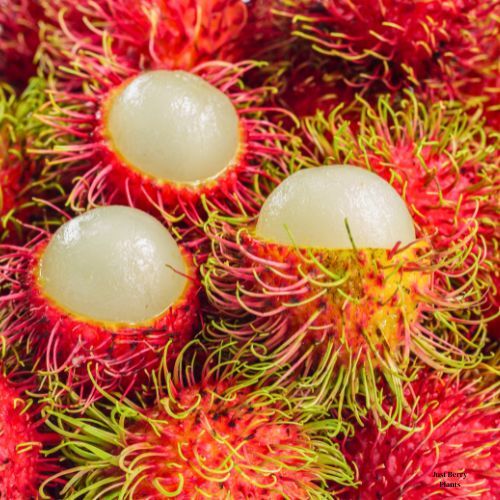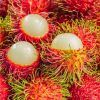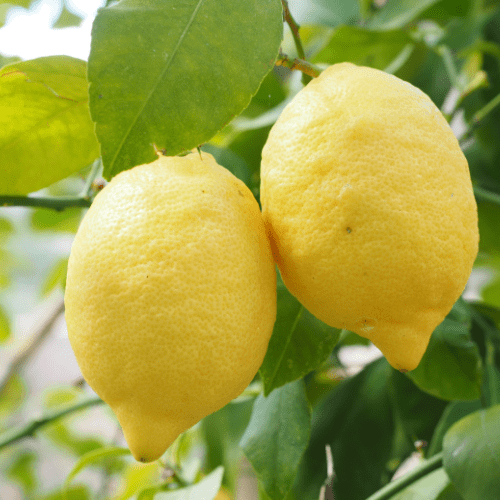Position
Prefers warm, humid, tropical climates. Ideal range: 22–35°C. Cannot tolerate frost; young trees are particularly susceptible to cold temperatures.
The best site is in full sun, protected from strong winds (which can damage flowers and fruit). Plant trees 10–12 m apart to allow canopy spread. Best planted at the start of the rainy season.
Soil
Deep, well-drained, loamy soils. Slightly acidic to neutral (pH 5.5–6.5). Avoid waterlogged or alkaline soils; roots are prone to rot in standing water. Mix at least one bag of acid compost and organic matter before planting to improve fertility.
Adding half a bag of our Volcanic Rock Dust and a whole bag of Superfrass will help promote rapid growth. They also protect the roots from insects.
Watering
Newly planted trees require consistent watering, but the soil should not be overly wet.
A rambutan tree needs at least 1 inch of water per week, but the exact amount depends on the growth stage and rainfall. Water deeply in the morning, ensuring the soil remains consistently moist but never waterlogged. Regular, smaller waterings are better than a single, deep soaking.
Mulching
Add a thick layer of pine bark mulch, keeping it approximately 5 cm thick, away from the tree trunk (any closer may cause excess moisture and damage the trunk). Mulching helps retain soil moisture, allowing the tree to thrive in high-humidity environments, as well as maintain slight acididity for the soil.
Fertilising
Apply one teaspoon every 4-5 months of our slow-release, nitrogen-rich all-purpose fertiliser. The roots will absorb what they require.
Pruning
Train the tree to a strong central leader with 3–4 main branches. Remove dead, crossing, or low-hanging branches. After harvest, light pruning helps sunlight reach inner branches.
Pests and Diseases
To combat common pests such as aphids, powdery mildew. fruit borers, mealybugs, and leaf miners, using Agricultural Neem Oil or Effective Microorganisms (EM) Control will assist in either preventing or managing after-the-fact issues.
Root rot (caused by poor drainage) and anthracnose (a fungal leaf and fruit disease) may also occur, but can be prevented by ensuring good drainage and pruning for optimal airflow.
Harvesting
Seedling trees: 5–6 years; Grafted trees: 2–3 years. In the right climate Rambutan can bear fruit twice a year, with a main crop and a smaller crop.
Fruits are ripe when the skin turns bright red, yellow, or orange (depending on variety). Cut fruit clusters carefully to avoid damaging branches.






